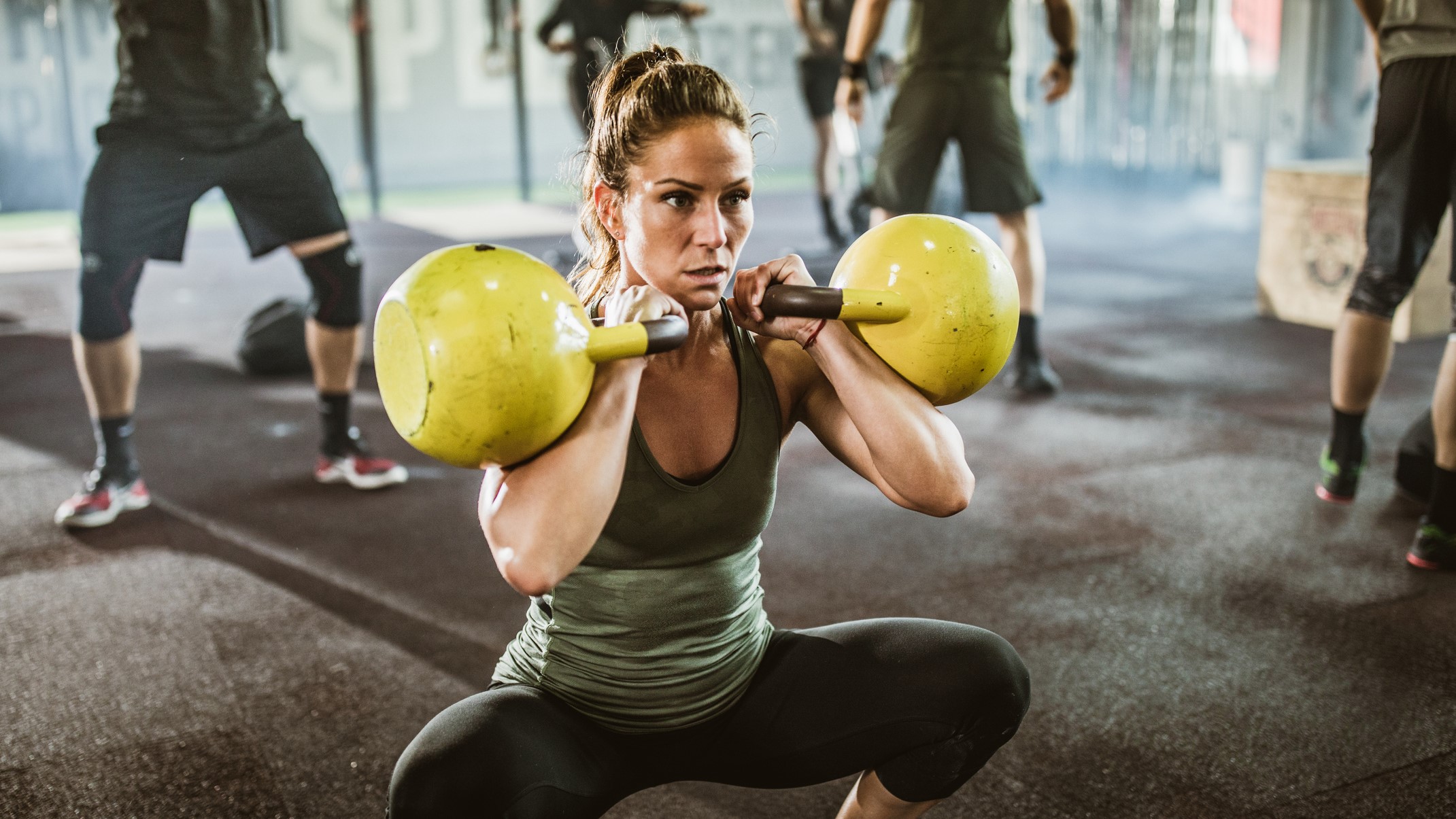
If you’ve purchased a set of the best kettlebells, or you’re looking for the best lower-body kettlebell exercises to improve your strength in the gym, you might have come across the double kettlebell front squat. This simple-sounding move targets most of the muscles in the lower body, predominantly the quads, glutes, and hips.
As holding two kettlebells is a lot more unstable than a barbell, your abs will also be getting a workout in this move too. If you struggle with barbell front squats, this exercise is a great way to work on your wrist and shoulder mobility.
But how do you do a double kettlebell front squat with perfect form, what are the benefits, and how can you modify the move? Read on to find out more. As a reminder, if you’re new to exercise or you’re returning to exercise following an injury or pregnancy, it’s a good idea to check your form with a personal trainer before adding weight to the move. Here’s more on how to master the bodyweight squat with perfect form.
How to do a double kettlebell front squat
As its name suggests, for this exercise, you’ll need a couple of kettlebells — we’ve rounded up the best kettlebells for working out from home here. When it comes to selecting the right weight for you, remember that the exercise should feel challenging, but not impossible, by the final few reps. If you find you are collapsing forward, or unable to stand back up to your starting position, chances are you need to reduce the weight.
Let’s start with how to do a double kettlebell front squat with perfect form:
- Start by grabbing a set of two kettlebells. Pick both up and hold them in a front rack position with a neutral wrist position — the wrist should be straight and locked out, and the kettlebell should be resting on your forearm.
- Stand with your feet slightly wider than hip-width apart, with your toes pointing outwards.
- Activate your core, thinking about sucking your belly button into your spine, and sit your hips down and back into a squat. Ensure you don’t round your back as you squat — keep your core engaged and glue your elbows into your sides.
- Squat down as low as you comfortably can, then engage your glutes and press your feet into the floor to push back up to your starting position.
Double kettlebell front squat: What are the benefits?
In addition to targeting the glutes, quads, hips and calves, there are some other benefits to practicing the double kettlebell front squat. First, your core is working hard in this move to keep your torso stable as you squat. Think about engaging your abs throughout the routine.
Second, the front rack kettlebell position will help you to work on your wrist and shoulder mobility — a great way to build up to the barbell variation of this move. The kettlebells are much more forgiving on the shoulders and wrists than using a barbell, so if you’ve been struggling in the gym, this is a great variation to try.
Finally, squats are a compound exercise, meaning you’re getting a lot of bang for your buck here. Compound exercises recruit multiple muscle groups and joints, compared to isolation exercises, which work one muscle group in one plane of movement. Adding compound exercises to your workouts builds muscle, improves flexibility, and helps you build stronger bones. Here’s more on the benefits of compound exercises.
Double kettlebell front squat: Form mistakes to look out for
As with most exercises, it’s important to get your form right in this move. We always recommend checking your form with a personal trainer before adding or increasing the weight, but here are some mistakes to look out for:
Broken wrist: It’s important not to hyperextend the wrist by letting the palm of your hand flex back towards your forearm. Your wrist should be straight and locked out.
Lifting too heavy: You’re likely going to have to put your ego to one side and decrease the amount of weight you’re lifting in this move, especially compared to the barbell variation. As a reminder, the weight should never be so heavy that it compromises your form.
Rounding the back: You want your core to be working hard here. If you round your back, the move is likely to feel easier, but your abdominal muscles won’t be doing any of the work, and you’re putting yourself at risk of injury.
Letting your elbows flare: Your elbows shouldn’t be floating around at the side of your body, they should be tucked in, down by your ribs. This will help you keep your wrist in a locked-out position, and you’ll be able to tense your lats for greater stability in the move.
Double kettlebell front squat: Variations to try
If this exercise is too difficult, simply lower the weight you are holding, or try a different squat variation, such as a goblet squat to work on your lower body strength.
Once you’ve mastered the double kettlebell front squat, you can switch the kettlebells for a barbell and work on increasing your weight. Alternatively, you can make small tweaks like elevating your heels to increase your range of motion.







